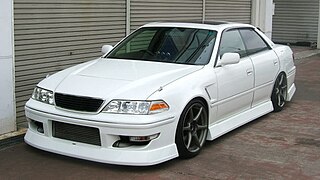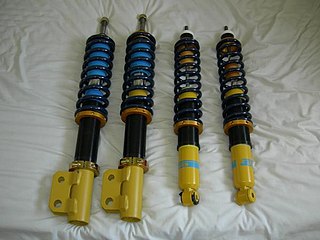Coil bind is a style of setup used in various levels of NASCAR racing. Coil bind setups utilize very soft front springs and very stiff rear springs to control the pitch attitude of the body. [1] This is in contrast with conventional setups which place the stiffer springs at the front of the car for superior mechanical grip, that is grip via the vehicle suspension and tires. Coil bind uses aerodynamics to produce grip.
The National Association for Stock Car Auto Racing (NASCAR) is an American auto racing sanctioning and operating company that is best known for stock-car racing. Its three largest or National series are the Monster Energy NASCAR Cup Series, the Xfinity Series, and the Gander Outdoors Truck Series. Regional series include the NASCAR K&N Pro Series East and West, the Whelen Modified Tour, NASCAR Pinty's Series, NASCAR Whelen Euro Series, and NASCAR PEAK Mexico Series. NASCAR sanctions over 1,500 races at over 100 tracks in 48 US states as well as in Canada, Mexico, and Europe. NASCAR has presented races at the Suzuka and Motegi circuits in Japan, and the Calder Park Thunderdome in Australia. NASCAR also ventures into eSports via the PEAK Antifreeze NASCAR iRacing Series and a sanctioned ladder system on that title.

Auto racing is a motorsport involving the racing of automobiles for competition.
Traction, or tractive force, is the force used to generate motion between a body and a tangential surface, through the use of dry friction, though the use of shear force of the surface is also commonly used.
As a car approaches the end of a straightaway, the downforce generated by the body of the car should increase the sprung weight until the coil springs compress until they bind and the suspension can no longer travel (hence the name). [2] The goal of coil bind is to keep the air dam (or splitter if applicable) at the front of the car as low to the ground as possible to create an area of low pressure under the car. The result is similar to ground effects. Under braking, weight transfer causes more weight to shift forward as the vehicle decelerates. This helps to maintain the low-pressure area below the car by keeping the front of the car low to the ground. While coil bind setups do yield faster lap times, the cars are more sensitive to turbulence generated by nearby cars.
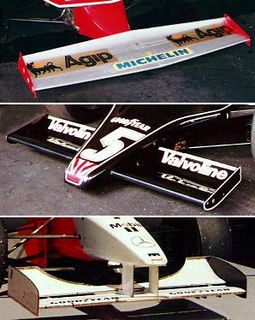
Downforce is a downwards thrust created by the aerodynamic characteristics of a car. The purpose of downforce is to allow a car to travel faster through a corner by increasing the vertical force on the tires, thus creating more grip.
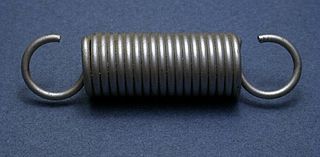
A coil spring, also known as a helical spring, is a mechanical device which is typically used to store energy and subsequently release it, to absorb shock, or to maintain a force between contacting surfaces. They are made of an elastic material formed into the shape of a helix which returns to its natural length when unloaded.
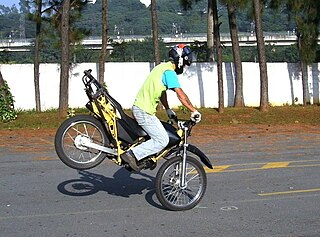
Weight transfer and load transfer are two expressions used somewhat confusingly to describe two distinct effects: the change in load borne by different wheels of even perfectly rigid vehicles during acceleration, and the change in center of mass (CoM) location relative to the wheels because of suspension compliance or cargo shifting or sloshing. In the automobile industry, weight transfer customarily refers to the change in load borne by different wheels during acceleration. This is more properly referred to as load transfer, and that is the expression used in the motorcycle industry, while weight transfer on motorcycles, to a lesser extent on automobiles, and cargo movement on either is due to a change in the CoM location relative to the wheels. This article uses this latter pair of definitions.









